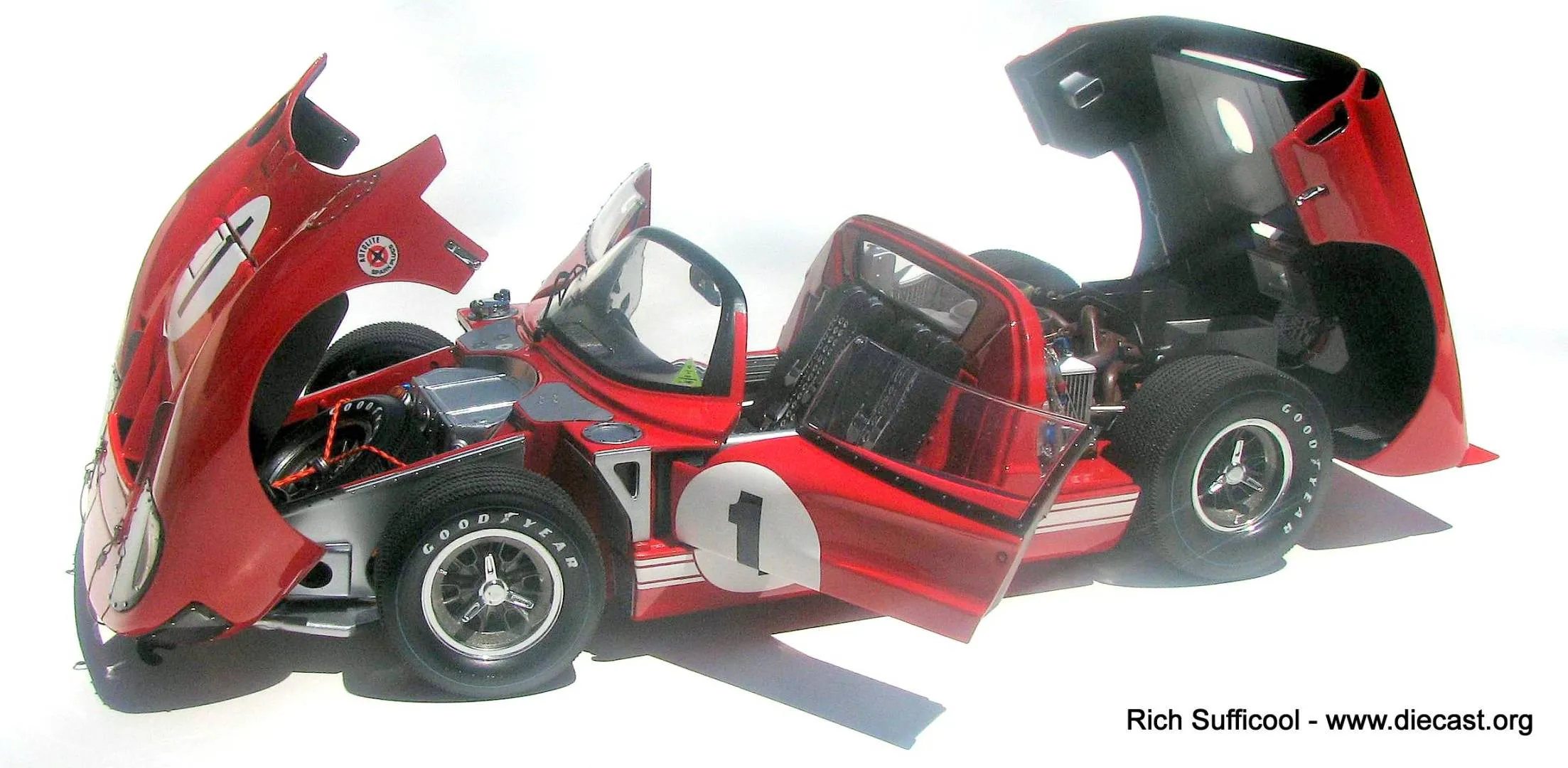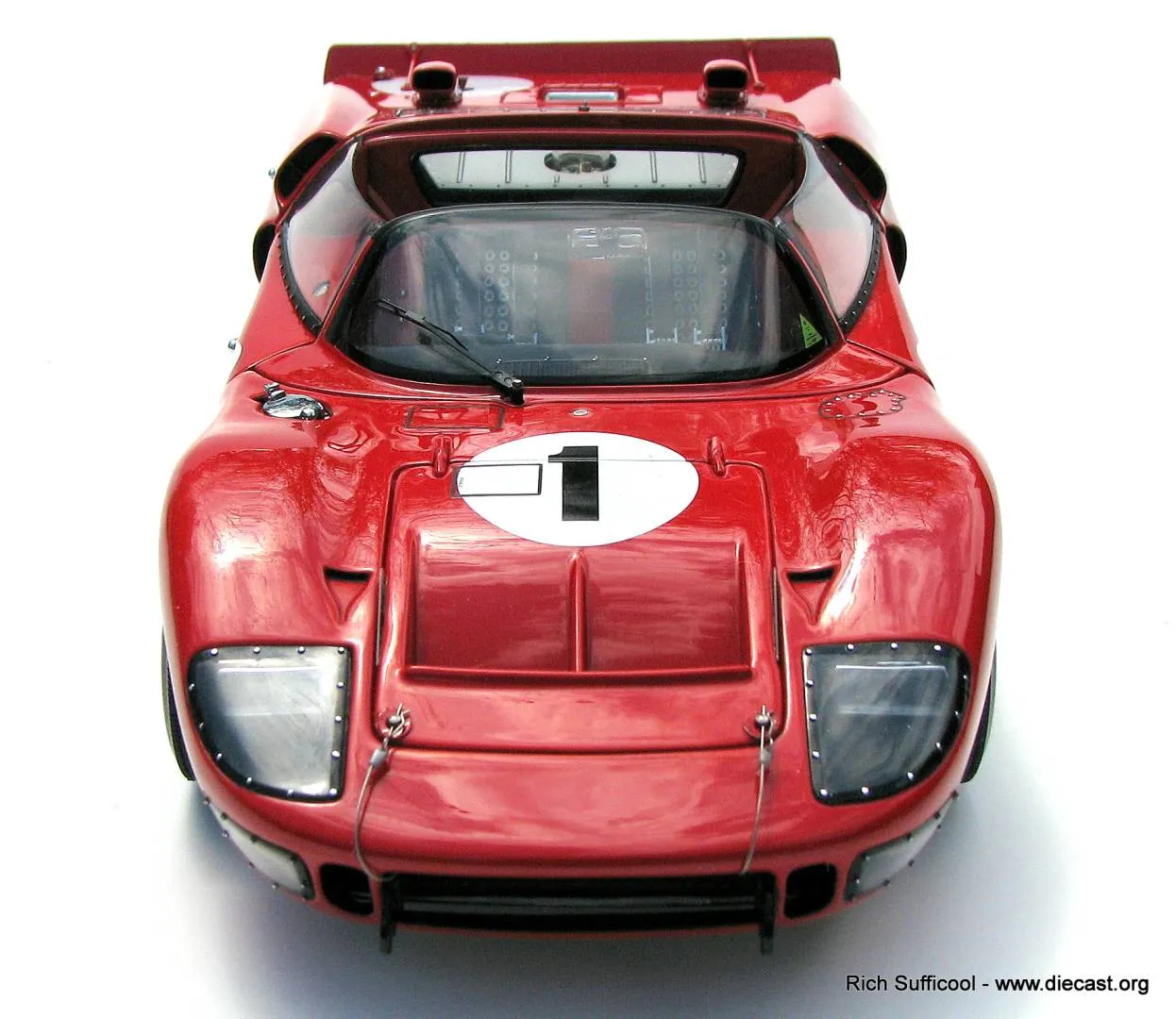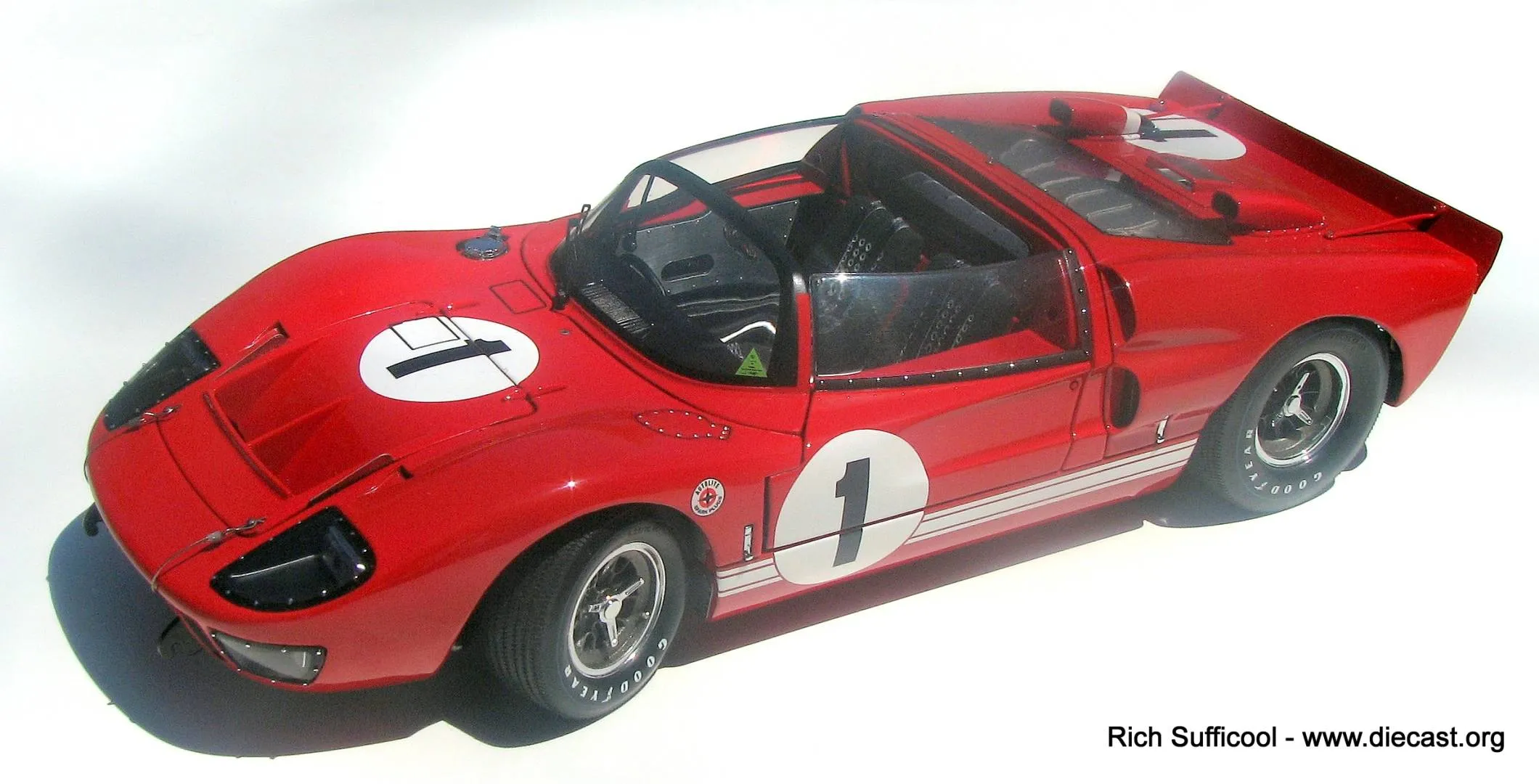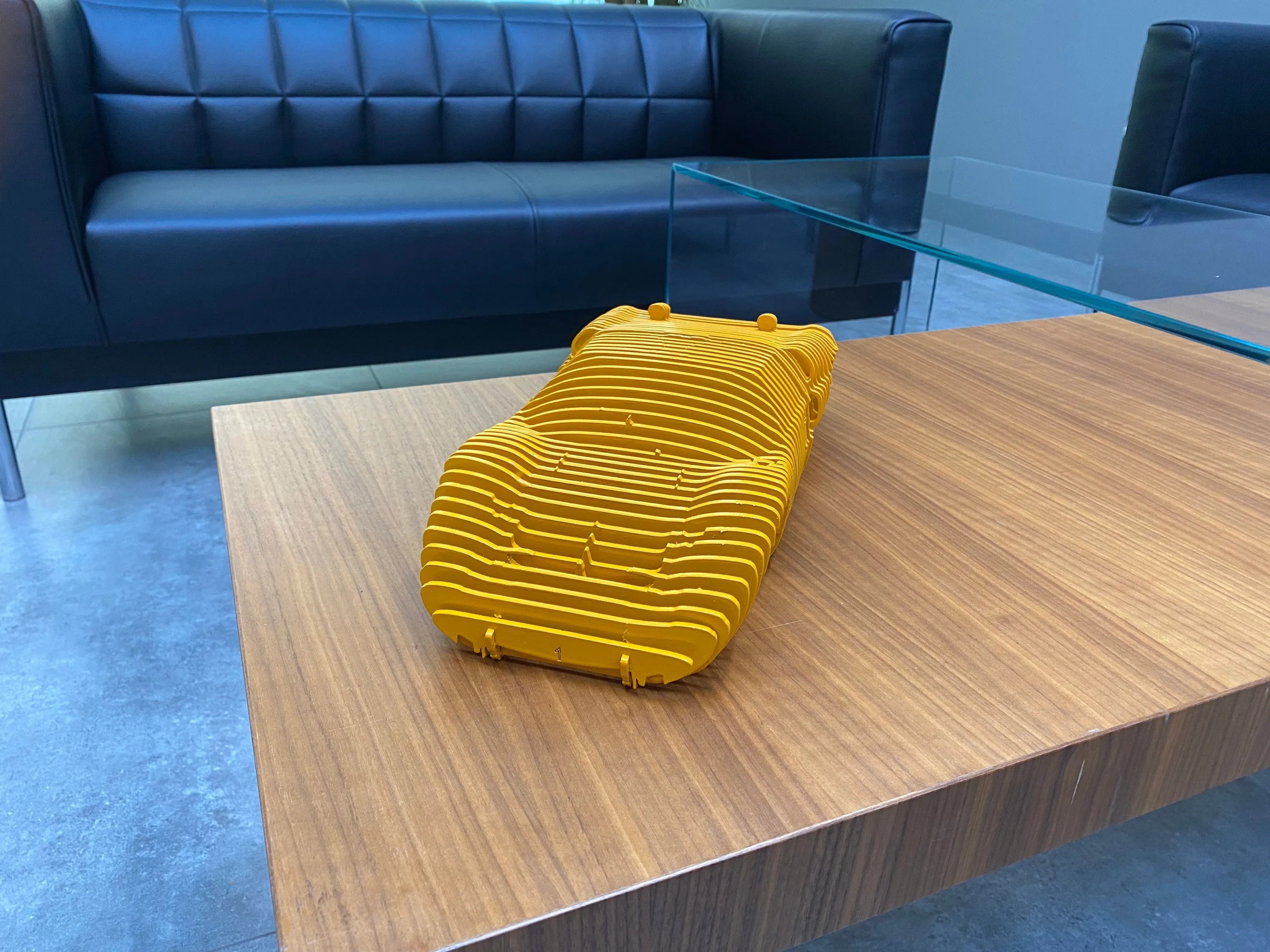The Ford GT40 Diecast Legacy
The Ford GT40 is a legendary race car, and its diecast models capture the spirit of this iconic vehicle. These miniature replicas are more than just toys; they are miniature works of art, meticulously crafted to represent the original car’s design, performance, and history. The Ford GT40’s racing dominance, especially its four consecutive wins at the 24 Hours of Le Mans, has cemented its place in automotive history, making the diecast models highly sought after by collectors. These models allow enthusiasts to own a piece of history, celebrating the engineering and design prowess of a true racing icon.
The Iconic Design of the GT40
The Ford GT40’s design is instantly recognizable, with its low profile, aerodynamic curves, and powerful stance. Diecast models meticulously replicate these features, ensuring that every curve, vent, and detail mirrors the original car. The long, sweeping hood, the distinctive door shape, and the rear wing are all faithfully recreated. These models capture the essence of the GT40’s design, from the aggressive front end to the sloping rear, showcasing the car’s intention to dominate the racetrack. The level of detail in the diecast models highlights the craftsmanship involved in creating these miniature masterpieces.
The Influence of Le Mans

The Ford GT40’s success at the 24 Hours of Le Mans is a major reason for its enduring popularity. These diecast models often celebrate this achievement, with specific models representing the winning cars from 1966, 1967, 1968, and 1969. The replicas often feature the correct racing livery, driver names, and race numbers, adding to their collectibility. Collectors often seek models that commemorate these victories, preserving the legacy of the GT40’s triumphs on the world stage. These models serve as reminders of the car’s dominance and the thrill of endurance racing.
Materials and Craftsmanship
The quality of a Ford GT40 diecast model is largely determined by the materials and craftsmanship involved. The best models are made using high-quality diecast metal, ensuring durability and a realistic weight. The production process often involves multiple stages, including precise molds, careful assembly, and detailed painting. Each model undergoes rigorous quality control to ensure accuracy and attention to detail. This level of precision is what transforms a simple diecast car into a valuable collector’s item.
Diecast Materials
Diecast models are primarily made from a zinc alloy, often combined with other metals for durability and detail. The diecasting process involves injecting molten metal into molds, allowing for complex shapes and fine details. High-quality models use premium alloys to ensure the model’s longevity and appearance. These materials are crucial for achieving the weight and feel that replicate the real car. The use of these materials allows for accurate and detailed replicas that can withstand the test of time.
Attention to Detail

The best Ford GT40 diecast models showcase an exceptional level of detail, including accurately replicated engines, detailed interiors, and authentic paint finishes. Manufacturers often include opening doors, hoods, and sometimes even removable engine covers to further enhance realism. The use of photo-etched parts, finely crafted decals, and realistic tires all contribute to the overall quality of the model. This level of detail appeals to collectors who appreciate precision and authenticity in their models.
Scale and Accuracy
Scale is a critical aspect of diecast model collecting, with various scales available, the most common being 1:18, 1:24, and 1:43. The scale refers to the ratio between the model’s size and the real car’s size. Accurate scaling is essential for realism, and collectors often focus on specific scales to maintain consistency in their collections. The choice of scale often depends on personal preference, available display space, and the level of detail desired. Regardless of the scale, the models strive to capture the GT40’s essence in a reduced size.
Common Scales
1:18 scale models are popular due to their balance of detail and size, offering a good level of realism. 1:24 scale models are often more affordable and still provide considerable detail, while 1:43 scale models are ideal for collectors with limited space. Each scale has its own advantages, and the choice depends on personal preferences. Some collectors focus on one scale to ensure uniformity in their collection, while others collect various scales for diversity.
Measuring Realism

Realism in diecast models is measured by several factors. The accuracy of the body shape, the details of the engine and interior, the paint finish, and the overall build quality all contribute to the realism. Collectors often compare models to photographs and technical drawings of the real GT40 to assess accuracy. High-quality models will closely match the original car’s dimensions, features, and details. The more accurate the model, the greater its value and appeal to collectors.
Key Features and Aspects
The features of a Ford GT40 diecast model can vary, but some aspects are highly sought after. These include opening doors and hoods, detailed engine compartments, realistic interiors, and accurate paint finishes. Additional features such as working steering, detailed dashboards, and removable wheels add to the model’s appeal. The presence of these features enhances the collectibility and value of the model, making it a standout piece for any enthusiast.
Opening Components
Opening components, like doors, hoods, and trunks, are a major selling point for diecast models. These features allow collectors to examine the detailed engine and interior, adding to the model’s realism. The functionality of these parts requires precise engineering and adds to the overall quality. This feature allows to appreciate the intricate engineering within the miniature replica.
Interior Detailing

Interior detailing includes detailed seats, dashboards, steering wheels, and instrument panels. High-quality models feature realistic textures, accurate colors, and finely crafted components. Some models even include fabric seat belts and detailed gauges. This level of detail enhances the overall realism and provides a complete picture of the car’s interior. The more detailed the interior, the more valuable the model.
Paint and Finish
The paint finish is crucial for the model’s appearance. High-quality models use multiple layers of paint and clear coats to achieve a glossy, realistic finish. The paint should be smooth and free of imperfections, accurately representing the original car’s color and livery. Some models feature hand-painted details, further enhancing their authenticity. The paint finish is a key element that defines the model’s quality and visual appeal.
Rarity and Collectibility
The rarity of a Ford GT40 diecast model significantly impacts its collectibility. Limited edition models, those with unique features, or those representing specific race victories often command higher prices. The condition of the model is also important, with models in pristine condition being more valuable. Collectors often seek models that are no longer in production or those that have special significance. Rarity, combined with quality and detail, makes these models highly desirable.
Limited Editions

Limited edition models are produced in smaller quantities, making them more exclusive. These models often feature unique paint schemes, specific racing details, or other special features. Collectors value these models for their rarity and the fact that they represent a unique piece of automotive history. Limited editions are often seen as investments, increasing in value over time.
Price and Value
The price of a Ford GT40 diecast model can vary greatly, depending on its scale, detail, rarity, and condition. Prices can range from a few dollars to hundreds of dollars for highly detailed or limited-edition models. Factors such as the manufacturer, the level of detail, and the model’s historical significance all influence the value. Collectors should research prices and compare different models to ensure they are making a sound investment.
Displaying Your Collection
Displaying your Ford GT40 diecast models is an important part of the collecting experience. Proper display can protect your models and showcase them to their best advantage. Collectors often use display cases, shelves, or dedicated rooms to exhibit their collections. The way you display your models can also reflect your personal style and appreciation for the GT40’s legacy.
Showcasing the Models

Showcasing your models requires careful planning. Display cases with glass or clear acrylic offer excellent protection and visibility. Consider using lighting to highlight the models’ details and features. Arrange your models in a way that is visually appealing and that tells a story, such as by race year or model variations. Regular dusting is important to keep the models looking their best. The presentation of your collection is as crucial as the models themselves.
Storage and Preservation
Proper storage and preservation are essential for maintaining the value of your diecast models. Store your models in a cool, dry place away from direct sunlight and extreme temperatures. Dust and moisture can damage the models over time, so it’s important to protect them from these elements. Consider storing them in their original packaging to preserve their value. Regular cleaning and careful handling will help ensure your models remain in excellent condition.
Conclusion
Ford GT40 diecast models offer a captivating blend of automotive history, craftsmanship, and collectibility. From the iconic design and racing legacy to the meticulous detail and limited editions, these miniature cars provide enthusiasts with a tangible connection to a legendary vehicle. Whether you’re a seasoned collector or just starting out, exploring the world of Ford GT40 diecast models is a rewarding experience, offering a glimpse into the world of automotive design and the thrill of the race. These models are not just collectibles; they are tributes to a timeless icon.
